Speaker
Description
With advancements in information and communication technologies, the virtual world is becoming a broader expression of our personal and collective space, leading to a bidirectional formation. This situation underscores the uncertain distinction between an individual's physical presence and actions in the real world, and their digital identity (and behavior) in virtual networks. With the transition from the Web 2.0 era to Web 3.0, the Metaverse, which places the user at the center and provides a sense of reality in virtual environments, has gained significant popularity. The Metaverse platform, which was initially popularized by virtual games, played a key role in converting physical spaces into virtual environments, particularly with the onset of the COVID-19 pandemic. The hybrid work model and the goal of improving employee experience scores are driving companies in the information industry to invest in virtual offices particularly metaverse offices which need to be designed with specific environmental design elements to make them attractive. The Metaverse serves as a virtual environment that can meet this demand for virtual offices while providing both social and commercial benefits.
The study aims to identify the factors influencing corporate site selection decisions of information industry companies in Turkiye within metaverse platforms and to explore how urban/environmental design tools can create added value. The structure of the study is concentrated on the relationship between the “Metaverse and urban design” with also “real estate and urban design” through remarkable subtopics which have emerged as the key terms most frequently associated with environmental design elements such as regional identity, mixed uses, open spaces, building heights and appearances, spatial relationships, sustainability, visual and morphological concepts.
The method of this study involves an online survey application based on key elements encountered in literature review and other environmental design elements predicted in light of urban planning/urban design formation, in order to determine which environmental design factors influence corporate site selection decisions of information industry companies in the Metaverse. Based on the survey results, the relationships and importance evaluation of environmental design elements were conducted using regression analysis in the SPSS software. Based on the initial findings of the pilot survey, environmental elements within the accessibility cluster have a more significant impact on the corporate site selection decisions of companies or institutions operating in the information industry compared to the urban space design elements cluster and building design cluster. It can be said that the dominance of this result is largely due to the fact that the survey was conducted in Turkiye, particularly reflecting the responses of company representatives based in Istanbul. This is because Istanbul is a metropolitan city where traffic and accessibility issues are particularly pronounced. Therefore, environmental design elements within the accessibility cluster have become the most prominent criterion even when making site selection decisions in the Metaverse. In line with the final results of this stage, it is aimed to capture an intersection between theory and practice with the platform design in the Metaverse planned for the next stage with simulating the environmental design elements identified through the survey. Additionally, it seeks to contribute to literature by identifying new environmental design elements in the Metaverse that may overlap with or differ completely from those in the physical world.
| Keywords | Metaverse; Environmental Design; Site Selection; Information Industry |
|---|

